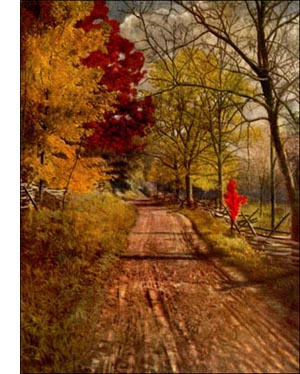Blue Ash Tree
 The Blue Ash (Fraxinus quadrangulata, Michx.) conceals its bluing in its inner bark. Crush a bit of it in water and the dye appears. But this is not always a convenient way to identify a tree. There is a simpler and more satisfactory way.
The Blue Ash (Fraxinus quadrangulata, Michx.) conceals its bluing in its inner bark. Crush a bit of it in water and the dye appears. But this is not always a convenient way to identify a tree. There is a simpler and more satisfactory way.Take a look at the twigs. Are they 4-sided toward the tips? Quadrangulata means 4-angled. This obvious trait and the perfect flowers set the blue ash apart from all the others.
The leaves and seeds might easily be confused with those of the black ash if form alone were considered. But the folliage mass of a blue ash is yellow-green, much lighter in colour than that of its sombre cousin of the swamps.
Blue-ash trees are common in the rich bottom lands of the Wabash River in Illinois, and along other tributaries of the Mississippi from southern Michigan, through Iowa and Missouri to Kansas and into Arkansas. It reaches south to the upper part of Alabama and east to the highlands of Tennessee. Some of the finest specimens grow on the limestone hills of the Big Smoky Mountains. The exact range of this tree is not known at present.
The French botanist, Michaux, fell in love with this tall, graceful grey-stemmed ash when he found it growing among the Alleghany Mountains. He named it for its angled twigs, and sent seeds, and young trees, perhaps, to be planted in European gardens. We can do no better than to follow his example, and plant the blue ash for shade and ornament in America. It is hardy, quick of growth, and unusually free from the ills that beset trees. A well-grown specimen is a constant joy to the tree lover.
The blue ash ranks high as a timber tree. It is fully the equal of white ash, and in one particular is better even than this one. It is more durable than any other ash wood when exposed alternately to wet and dry conditions. It is used for vehicles, for flooring, and for tool handles, especially pitchforks.